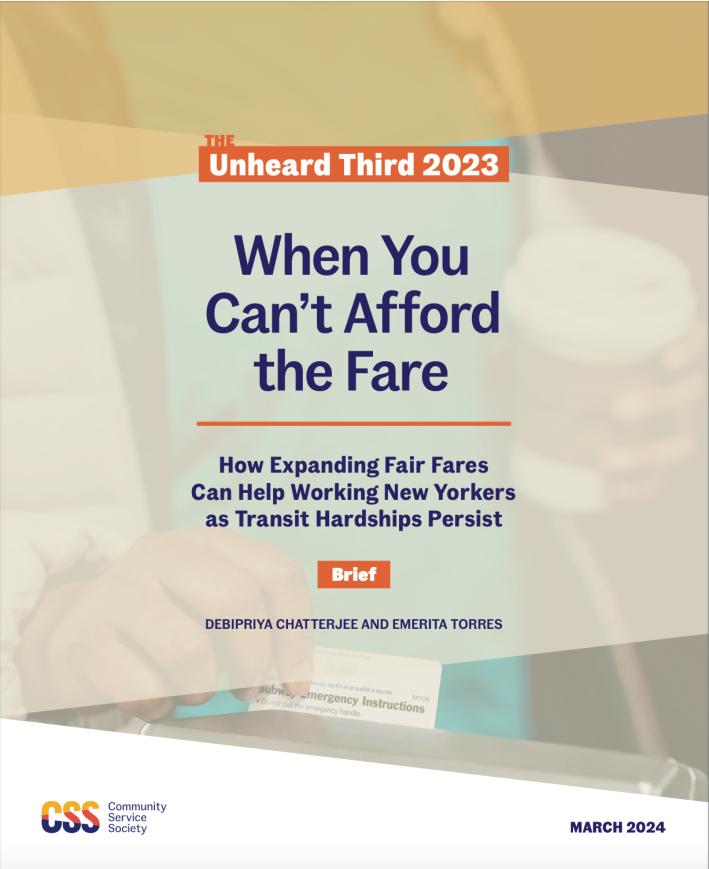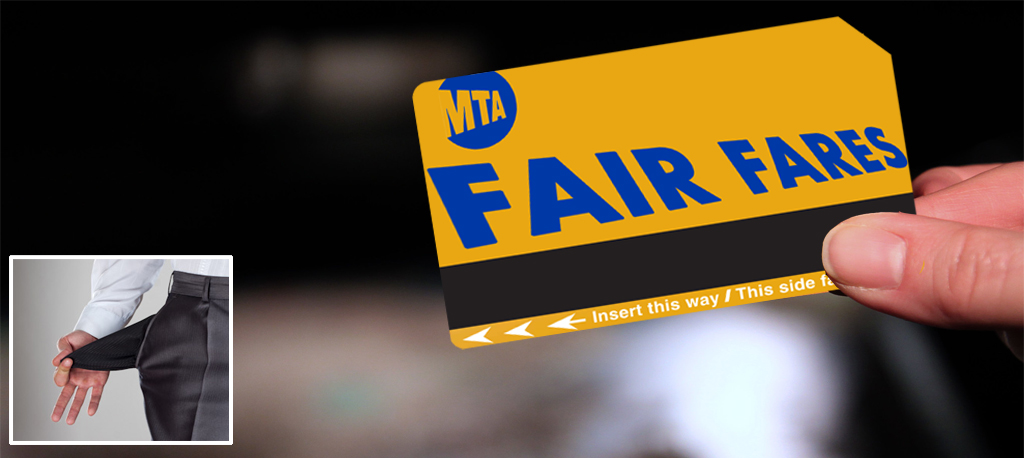It’s not just low-income New Yorkers who are having difficulty paying for public transit — a new report on transit fares has found that more than one-in-five moderate-income residents experience “affordability hardship.”
And the 2023 version of the Community Service Society of New York's annual report was compiled even before the fair rose to $2.90.

“Transit affordability has emerged as a challenge even among moderate income and high income households,” said this year’s report, the first time in CSS’s 20-year survey that moderate-income New Yorkers have reported difficulty paying for public transit at a higher rate than city average.
On the positive side, the percentage of low-income residents who struggle with transit costs declined from an historic high of 36 percent in 2022 to 30 percent in 2023. Low-income is defined as being at the federal poverty line: having a household income of less than $30,000 a year for a family of four or around $14,500 for an individual. Fair Fares now reaches people making 120 percent of that threshold, which could explain the drop in low-income residents struggling with the cost of the fair last year.
But the most shocking finding is that 21 percent of moderate income households — which are defined as incomes up to $120,000 a year for a family of four or around $58,000 for an individual, or 200 to 400 percent above the federal poverty line — are experiencing “transit affordability hardship” in 2023, up from 18 percent in the previous year.
“We’ve never seen that before,” said Community Service Society Vice President Emerita Torres. “Transit costs are taking a bigger salience in the household budget.”
The report analyzes the effectiveness of the city’s Fair Fares program, which provides half-price Metro Cards to low-income New Yorkers but also shows that New Yorkers in the next highest wage category are also experiencing difficulty paying.
The survey was conducted in 2023, before the MTA raised a swipe from $2.75 to $2.90, which means the problem may in fact be worse now.
“I bet next year, we're going to see an even higher transit hardship because of that fare hike among these groups,” Torres said.
The Community Service Society’s report recommends that the city add $55 million — a fraction of a percent of the current city budget of $107 billion — to expand Fair Fares so that it covers some New Yorkers classified as moderate-income, such as people making minimum wage, or $31,200 per year, a sum that no one would define as livable for a family.
On Wednesday, the state legislature echoed this demands, including funding to expand the program in the Assembly’s one-house budget resolution.
For many New Yorkers, high fares have already changed their habits. Hugo Li, a student at Pratt, said that he will often walk from his home in Clinton Hill to run errands in Downtown Brooklyn rather than take the convenient G train because of the price. “It’s just too high,” he said of the $2.90 fare.
Other New Yorkers admitted to hopping the turnstile. “If I have to take the train more than two times per day, I am going to slip through a door or ask someone to open it for me. The price really adds up,” said Kiley Fisher, a pilates instructor, at the Clinton-Washington station in Clinton Hill.
The failure of Fair Fares to cover minimum wage workers is especially challenging for New Yorkers like Jessica Cava, 20, who earns the $15 per hour at Juice Press in Williamsburg. She says she can only afford the fare to and from work because she still lives with her parents.
“It’s crazy, it’s a lot,” she said of the cost of a swipe.
Torres says that the real problem is using the Federal Poverty Line to assess need in New York City. Low or minimum wage workers like Cava and Biename — although considered moderate-income — need the assistance the most day-to-day, while those who qualify for the assistance are often unemployed or underemployed.
“Applying the federal poverty line as it is is just woefully inadequate given the cost of living here,” she said. “If we're going to keep using this inadequate measure the percent has to be higher to reflect the cost of living in the city.”
Fair Fares isn’t even reaching everyone it can now. Around 70 percent of those currently eligible aren't signed up, and meanwhile, people who aren’t eligible are falling behind.
“The transit system has the potential to be a grand equalizer. I think that this program has the ability to help the city achieve that,” Torres said. “But we're not there.”






